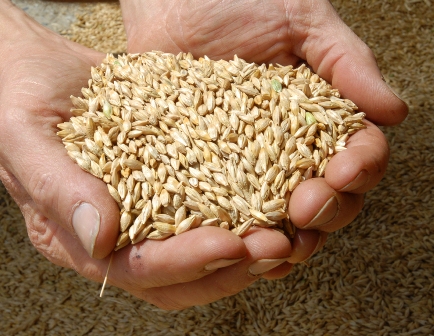By Allen Young
Beer prices in North America may rise next year as brewers and maltsters face higher costs after snow, cold, and wet weather damaged Canadian barley crops and left those farmers with the lowest yield in 46 years, and the worst harvest in the United States in 4 years.
While many brewers are focused on the recent hop harvest and all of the pressures to meet demand for highly hopped craft beers brewed with more pounds per barrel than ever in the history of beer making, it is the main ingredient that I wish to inform you all about this year – Barley malt! Malted barley, the foundation of most every beer style has felt pressure from similar demand like hops, from ever expanding craft breweries and new breweries entering the market. However, the North American crop has begun reporting a perfect storm of factors that have wreaked havoc on the barley crops. In short, this has been a terrible weather year. The early word from the fields is that this may prove to be one of the worst crops ever.
Canada, the world’s second-biggest exporter of malting barley, was already harvesting its smallest crop since 1968, before a recent dump of snow and freezing temperatures in Alberta, the biggest barley-growing province. The United States is seeing signs in North Dakota of a malt spoiler that causing beer to gush out foam upon opening the package. Moisture levels are so high that the barley silos will have a tough time keeping the seed stored until malting without the seeds rotting first. And the barley crops in Montana and Idaho were hit with rain during harvest that also caused some sprouting activity in the grain prior to it being harvested.
The shortage will hit craft brewers the hardest, since they typically keep less malt inventory on hand and many use 100% malted barley to produce their brews without “stretching “ the formula with other starch sources such as rice, corn, or wheat. Import malts may be a good alternative this year for many craft brewers, as the cost will get closer to the domestic grain prices here. The larger breweries that are also better able to absorb costs will likely use enzyme additives that will coax more sugar from the poor quality barley malts. Additionally, for the craft brewer the quality of this expensive barley malt will be a major down side. The protein levels are very high which leads to a low yield on wort meaning more barley malt is used to keep the beer formulas in spec. as well as, the potential for a haze to form in the packaged beer on the shelf when the protein chill haze forms. Further bad news for the brewers in the brew house is much longer brew days ahead as a difficult gum called Beta Glucans are very high in this crop, which leads to very slow collection of the wort. Much of Canada’s barley crop ended up covered in a thick layer of snow in early September. The snow blanket was followed by freezing temperatures that may have killed any immature crop, leaving it unfit for use in brewing. The mature seeds do start to sprout and are too damaged to assist later in the malting or germination portion when converting barley into malted barley. The resulting sprout damage and high moisture content means most of the crop will be animal feed or an insurance right off. European farmers, which are the biggest barley producers in the world, along with Australia and Argentina all expect to harvest smaller crops because of weather and other factors.
Let’s get through the next beer year and hope for clear skies, and perfect growing conditions for our farmers, maltsters, brewers and BEER drinkers!
Allen Young is the Southeast sales manager for BSG Craftbrewing. Young is a former brewmaster at Gordon Biersch in Virginia Beach.



